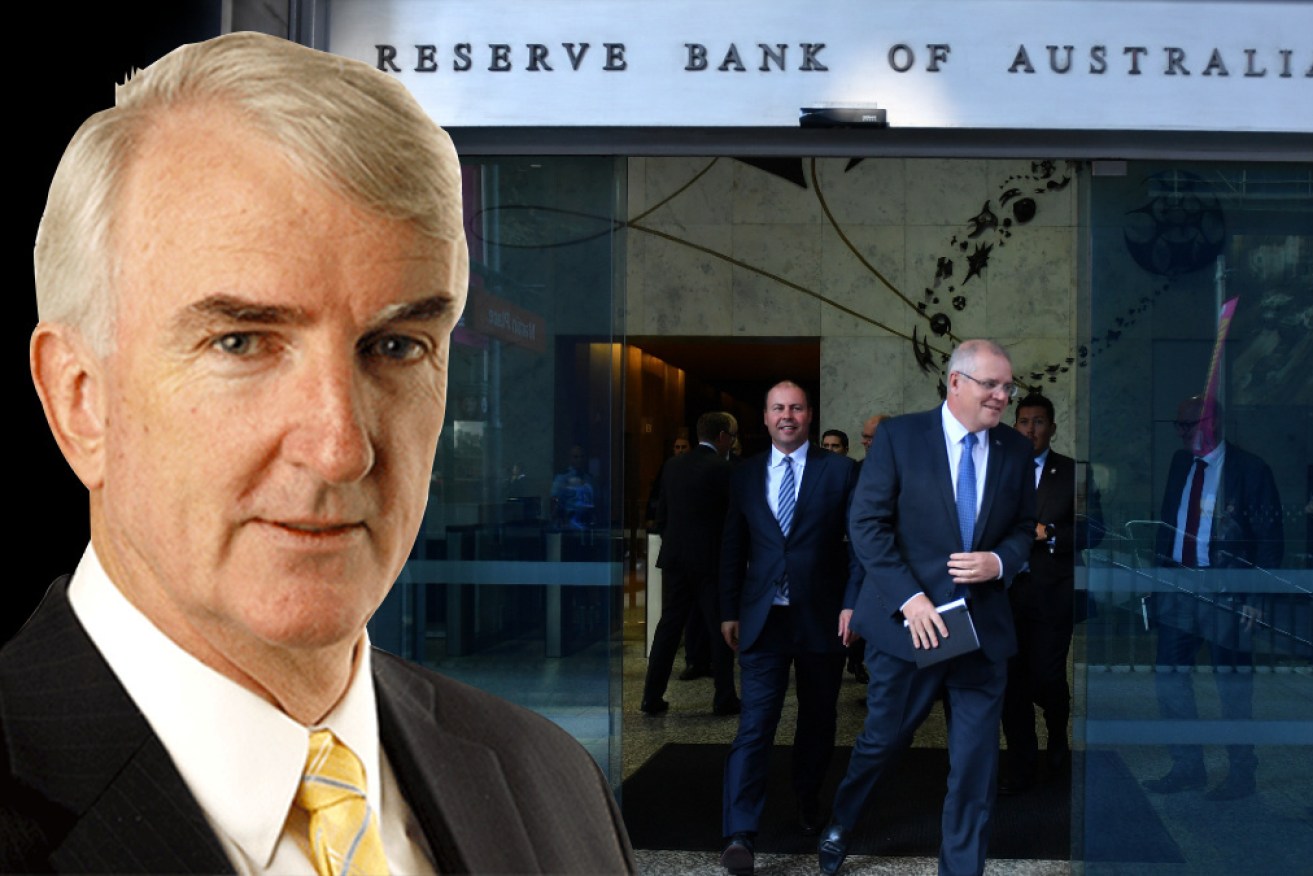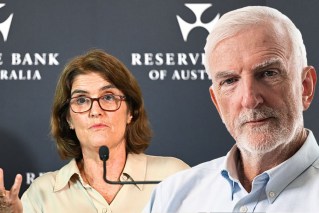Michael Pascoe: No, Virginia, the trillion-dollar debt isn’t free


The Coalition has changed its tune on debt. But a massive bill is unavoidable, writes Michael Pascoe.
The government’s sudden embracing of debt and deficit with its whiff of MMT (modern monetary theory) may have created the impression the hundreds of billions of dollars being printed by the Reserve Bank are free for the asking.
They’re not. A mere 1 per cent rise in interest rates down the track will cost the RBA many billions of dollars that will eventually flow through to all of us by one mechanism or another.
Oh, the fresh debt is very cheap for the government at present – nothing in real terms when the three-year bond target is just 0.1 per cent.
And the $200 billion worth of government bonds the RBA is buying (with maybe another $100 billion to come) actually is free for now as the RBA effectively refunds the federal government’s interest payments in its annual dividend payment to Treasury. Sweet.
That’s the bit that gets the MMT brigade excited as it looks a bit like the government has its own printing press and it’s money for nothin’ and cash for free.
But no, Virginia, there isn’t a Santa Claus and it’s not free.
The debt is affordable and there is no reasonable alternative.
It would be more affordable if it were used wisely, invested in our future and not primarily used to solve immediate political problems, but in either case, we will have to pay for it.
For a start, there will be the RBA’s red ink.
Let’s assume that all the monetary and fiscal stimulus works, the government eases off suppressing wages, we get decent real, take-home wage rises and healthy inflation, prompting the RBA to lift its key rates and targets to 1 per cent.
Let’s also assume that before then, the RBA extends its present $200 billion quantitative easing program by another $100 billion as many expect, resulting in it holding a portfolio of $300 billion worth of bonds with an average duration (more or less how long before the government pays them out) of three years.
When rates rise, the capital value of bonds fall. In rough numbers, a 1 per cent interest rate rise would mean the RBA would be facing a $9 billion capital loss on a $300 billion bond fund that had an average duration of three years. Not so sweet.
That would punch a very large hole in the bank’s asset revaluation reserve which stood at $7.3 billion last June 30.
And then there is the cost of the bank having to pay higher interest on its inflated exchange settlement balances.
When the RBA buys a $1 million bond from Bank X or Super Fund Y, a central bank types some numbers on a computer that puts $1 million into the Bank X’s exchange settlement account or the bank Super Fund Y uses.
The RBA gains a $1 million asset on one side of its ledger, but incurs a $1 million liability on the other side in the exchange settlement account.

Reserve Bank deputy governor Guy Debelle says the RBA will not directly finance the government.
That $1 million liability does not go away.
Bank X might lend it to people who deposit it in Bank Z or spend it on stuff from a number of merchants who all pay off loans or deposit it a number of banks, but it pretty much all still ends up in the RBA’s exchange settlement balances.
On Wednesday, the RBA’s exchange settlement balances stood at $217.5 billion. Two years ago, the balances stood at just $27.9 billion – you can see where the printed money ends up.
The RBA cut the interest it pays on the balances to zero. When rates start to normalise, it will pay maybe 10 points less than the cash rate, so if the cash rate rises to 1 per cent, the RBA will have to hand over 0.9 per cent on the balances.
On the extra $300 billion, that’s an extra cost of $2.7 billion a year.
So the RBA will be caught in a vice of rising capital losses and higher costs on its exchange settlement balances.
It doesn’t look like the federal government will be receiving any dividends from the RBA when rates start rising. The present cosy relationship of the government paying the RBA interest and then getting the money back from the RBA as a dividend will be over.
“Printing” the money doesn’t abolish the debt. It just transfers the public sector’s liability to the private sector from bonds to the deposits held at the RBA. It still costs money – there is no magic money-go-round.
Theoretically, the RBA could avoid the big capital losses by abandoning Australia’s accounting principles of marking to market, but it would not be a good look and it’s hard to imagine any government wanting to upend our accounting system.
The RBA is very clear about not jumping the monetary shark and handing over the printing press directly to the government. Nobody trusts politicians with that temptation.
Deputy Governor Guy Debelle was very, very clear about that in a speech on May 6:
“The RBA does not, and will not, directly finance governments. While the bond purchases are lowering the cost of finance for governments – as is the case for all borrowers – the bank is not providing direct finance. There remains a strong separation between monetary and fiscal policy.”

Government debt is on course to surpass $1 trillion. Photo: AAP
The RBA keeps a theoretical arms-length from the government by the government selling its bonds to the market and the RBA then buying from said market. You can rightly say it’s a very short arm, but an arm nonetheless to preserve a little market pricing window.
The market’s pricing of our government debt is no problem for now – the market loves our government debt, with or without the RBA underwriting the price.
Opinions of government debt can change though.
Given the Morrison government’s trashing of our relationship with China, its abandoning of diplomacy, how wonderful might our economy look in a few years if China can buy its iron ore from mines it is helping to develop elsewhere?
Yes, our debt is in Australian dollars, but it’s not all held by Australians. It is possible to imagine scenarios when a country that hasn’t invested in its future and carries a large debt could find itself in trouble with the bond vigilantes.
Hopefully not, but remember again that the debt doesn’t really go away and comes at a cost.
Which is why it remains important to spend it wisely. A friend who keeps a close eye on both the reality and the rhetoric expressed a particular frustration with the Coalition’s U-turn.
“What annoys me is that they are running around looking like they’ve discovered some new economic truths – ‘aren’t we clever’,” my friend wrote.
“Those truths have always been around and they and their like have ignored them for a generation or more.
“If they hadn’t we might have had fully equipped hospitals, aged-care facilities that were able to look after the frail, a decent public housing stock and more world-class universities.
“The related point is that the garden-variety commentators have swallowed the line that the paradigm has changed and the government has switched course by virtue of blinding insight – when, in fact, what’s happened is that monetary policy has reached the end of the line and what they’ve done suits their political interests.
“They had no choice.”








